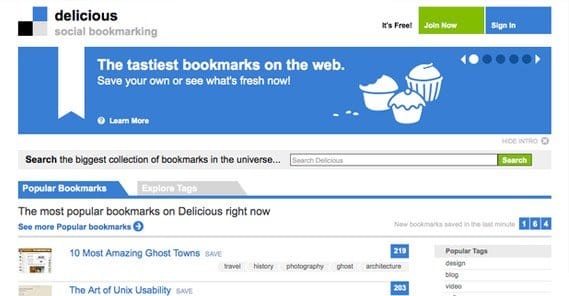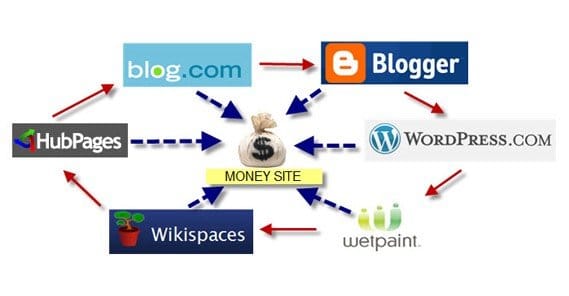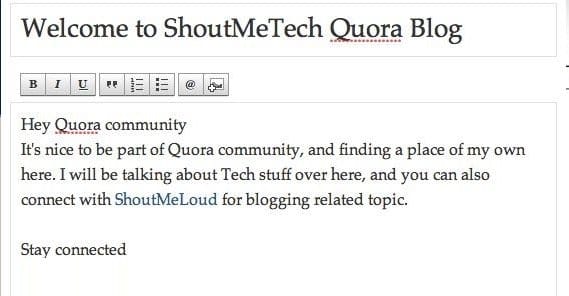Are Web 2.0 Sites Still Effective for Link Building?

Web 2.0 was many things; it was a mock-worthy internet buzzword, it was a trend in website focus, and it was a link building strategy used by a surprising number of marketers. We don’t think of it as web 2.0 these days, but the same principles apply, if you’re able to take advantage of them.
What Specifically is Web 2.0?
Web 2.0 is an interesting sort of category, because it marked a transition from the internet of old to the internet of today. In the old days, in the 80s and 90s, most websites were expensive or owned by private parties, companies, businesses, universities and the like. These sites were maintained by content owners and producers, and were viewed by consumers. There wasn’t as much interaction between owners and users; if you wanted to participate, you had to contact the owner and figure out how you could contribute. Often this meant communication via email, a paper trail, and all the old fashioned trappings of an older era.
The internet of today is very different, with everything using social components or wiki-style user generation. Free blog sites allow anyone to be a content producer regardless of budget, and with a budget sites can spring up that put the majority to shame.
The transition was in the web 2.0 era, where people started making websites that focused on user generated content, or content that worked across sites, or sites that worked across content. Social networks, wikis, blog networks, web apps; all of these are technically web 2.0.
The fact is, we think of web 2.0 as an era that has passed, but the current web is very much powered by the underpinnings of web 2.0. The fact that the biggest sites in the world are social networks and wikis and forums contributes to this. Just look at Alexa’s top 500 and count how many of them are based on or rely on user-generated content, or are in some way designed to facilitate providing it.
Web 2.0 Link Building
Link building with web 2.0, then, doesn’t seem to make much sense, right? If Facebook is web 2.0, if Wikipedia is web 2.0, if just about everything in operation today is some form of web 2.0, then what would web 2.0 link building be that is different from normal link building?
The answer is that web 2.0 link building is just a fancy way of talking about other forms of link building, most typically either private blog networks or tiered link building.
The idea works like this:
- Make a list of web 2.0 properties you want to target. These will be sites like WordPress.com, blogspot.com, weebly.com, jimdo.com, or even part of the Wikia network.
- Start creating sites on these properties, typically in moderation. Your goal with modern web 2.0 link building is to build natural-looking links, not links in bulk. 10 decent quality sites will be better than 1,000 spam sites. This is why automating this process is more difficult than ever today.
- Populate your sites with some amount of relevant content. This content should not be scraped or stolen, and ideally it should not be spun. Write it yourself or hire a writer from a place like Writer Access or Upwork. Make sure all of this content is related to your primary site’s content, but isn’t directly referential or copied. You’re looking for content that forms a natural link to your main site.
- You’re looking for 3-4 posts per site, with a random assortment of images/videos/media on each. They shouldn’t look like copies of one another, so they shouldn’t cover the same topics and they shouldn’t have similar themes or layouts. The variation is important, because this all needs to look organic.
- Over the course of a month or two, publish posts to each of your sites that include links to your main site. You can continue to maintain these smaller sites, or you can pass them off as abandoned and focus on your primary site.
The ideal result of this process is creating several backlinks pointing to your site. These links come from blogs that look more or less natural but are not active. The links, being relevant in topic and coming from sites that aren’t obviously spam, will provide some minor value to you. They aren’t going to skyrocket you to the top of the search rankings, but they are a low-risk way of boosting your ranking to a minor degree.
The problem, of course, is Google algorithms like Panda and Penguin. These have made it harder than ever to rank with web 2.0 link building, because they raise the bar on what is necessary to make a valuable link. They also add in that potential penalty; what happens when Google catches you in the act and flags all of your web 2.0 sites? Your main site will lose their value and may be hit with a manual action relating to links, until you remove or disavow them.
The fact is, the standard method of web 2.0 link building doesn’t really work anymore. It takes a lot more effort to pull off, and while it’s not as risky as it once was, it does require a significant investment. Then again, these days, any time you’re making an entirely new site is a time when you’re investing a lot for whatever benefit you hope to get.
Value and the Super 2.0
The concept of making a web 2.0 page for a link, but making sure it maintains value and doesn’t lose it in a minor algorithm update, is the idea of making a Super 2.0. These blogs – because of course they’ll be blogs – require enough value to remain ranked and stand the test of time.
Here’s the process.
First, choose 5-10 blogging platforms you want to target and register accounts for each of them. Make sure you verify your email address for them, so you don’t have your profiles deactivated a few months down the line. WordPress.com, Blogger, LiveJournal, Tumblr, TypePad, and other free blog services all work well. The better the platform, the more value can come from the link you’ll create.
When you’re creating the page you’re going to use, feel free to use semi-relevant keywords in the domain. EMDs aren’t all that great these days, but people still use them, so they aren’t entirely detrimental. However, you can spice up a keyword by making your blog URL something like “thekeywordvariantspot” or what have you. Just make sure they’re industry-relevant and that they aren’t similar across your different platforms.
Customize each site in a different way. They should all have different titles and descriptions fitting the persona you’re implying existed in the person who created them. Create unique about pages for each of them, and create contact pages, even if those contacts just lead to an email junk folder you never bother to check. Use photos to give the author persona more legitimacy, no one will care if they’re stock or stolen. I don’t recommend stolen, but realistically it’s not going to hurt you.
On each blog, create a basic welcome post, again befitting the persona. Some will be personal blog style “hey welcome to my blog.” Some will look a little more like a business posted it before they abandoned free blog pages. Post them on different days, just to further avoid making everything look similar.
Once those are all up, start creating relevant filler content. This is content that Google will appreciate, but which isn’t a huge investment. You’re looking for bottom of the barrel, easy topics. Stuff like beginner’s guides and intro posts work well. Media posts also work, so long as the media isn’t likely to disappear along the way. You can post videos as if you found them and thing they’re cool. You can post image galleries with descriptions relevant to your keywords. You can make a quote repository. You can share infographics relating to your niche. You can even commissions some decent quality content on basic topics.
Don’t publish all of this content at once. Instead, use the blog’s native scheduler or a third party app to schedule the posts out for a few months. You don’t want everything to have same-week archive dates, that just makes it obvious the page was created quickly. Create somewhere between 4-10 filler posts per blog, and schedule them out 1-2 per month, with some minor inconsistency here and there. Again: think organic.
Now create seed posts. There will be one of these per blog. They should be unique and as valuable as you can make while still looking reasonable in the context of the site. It’s “the best piece of content on this site” not “a great piece of content uncharacteristic for this site.” You want at least 1,000 words, and it should be highly relevant to your primary keyword. This should be as specific as possible. Use relevant images – different for each blog – and even a video if you can. Link to more than one authority resource, and link to your primary site as a resource as well. This is better if you have specific blog posts you can link to from each site. Try to place your link first in the article, whenever possible.
Schedule these seed posts somewhere in the middle of the rest of the content. You don’t want every dead blog to end on a link to your main site, that just makes things obvious.
At this point, you should have some value coming in. You won’t have a lot, but that’s fine; you’re just adding some beneficial links to the other sources of beneficial links coming in to your site. Slipping in a few extra, is all.
If you really want to boost the value coming to your main site, you can do two things. The first thing you can do is build more sites pointing at your main site. The second is build several sites that point to your sub-sites, for a bit of tiered link building. The idea is that the value flowing from A to B is boosted when value flows from C to A first. Just remember to maintain value and don’t cut corners. Cutting corners is how these miniature blog networks are demolished.
Is This Technique Effective?
This is the real question. The idea of tiered link building or a free private blog network is nothing new. This sort of link building has been going on for years, long before Panda and Penguin hit the stage. A lot of the posts you read about web 2.0 link building all come from 2012 or 2013, when it was in its heyday, before it started to collapse.
That’s right; I consider web 2.0 link building to be a bit of a collapsed industry. It can work still, but it has a lot of drawbacks.
- Google might not penalize your main site for using this method, but it’s not afraid to artificially impose nofollow on your tiered links so you gain no value from them.
- The setup costs are low for free blogs, but it takes a lot of time to properly set up this entire process, and it can cost a lot to keep buying valuable content to build more and more sites.
- Every bit of effort, time, and money you spend building links with a web 2.0 method is effort, time, or money you could be spending on improving your site or marketing in more legitimate ways. You can get more bang for your buck elsewhere.
- As a gray hat technique, being discovered and outed can hurt your reputation. Some people, particularly high-end marketers, don’t like to associate with marketers who make use of techniques they don’t like. This means it might be harder to get legitimate links from influencers, which is the next big wave in marketing.
So, the technique works, but it’s risky. There’s less of a chance of it backfiring than there used to be, but there’s plenty of chance of it simply falling flat. The energy you put into creating the sites might go to waste if they don’t give you much or any value.
 ContentPowered.com
ContentPowered.com








